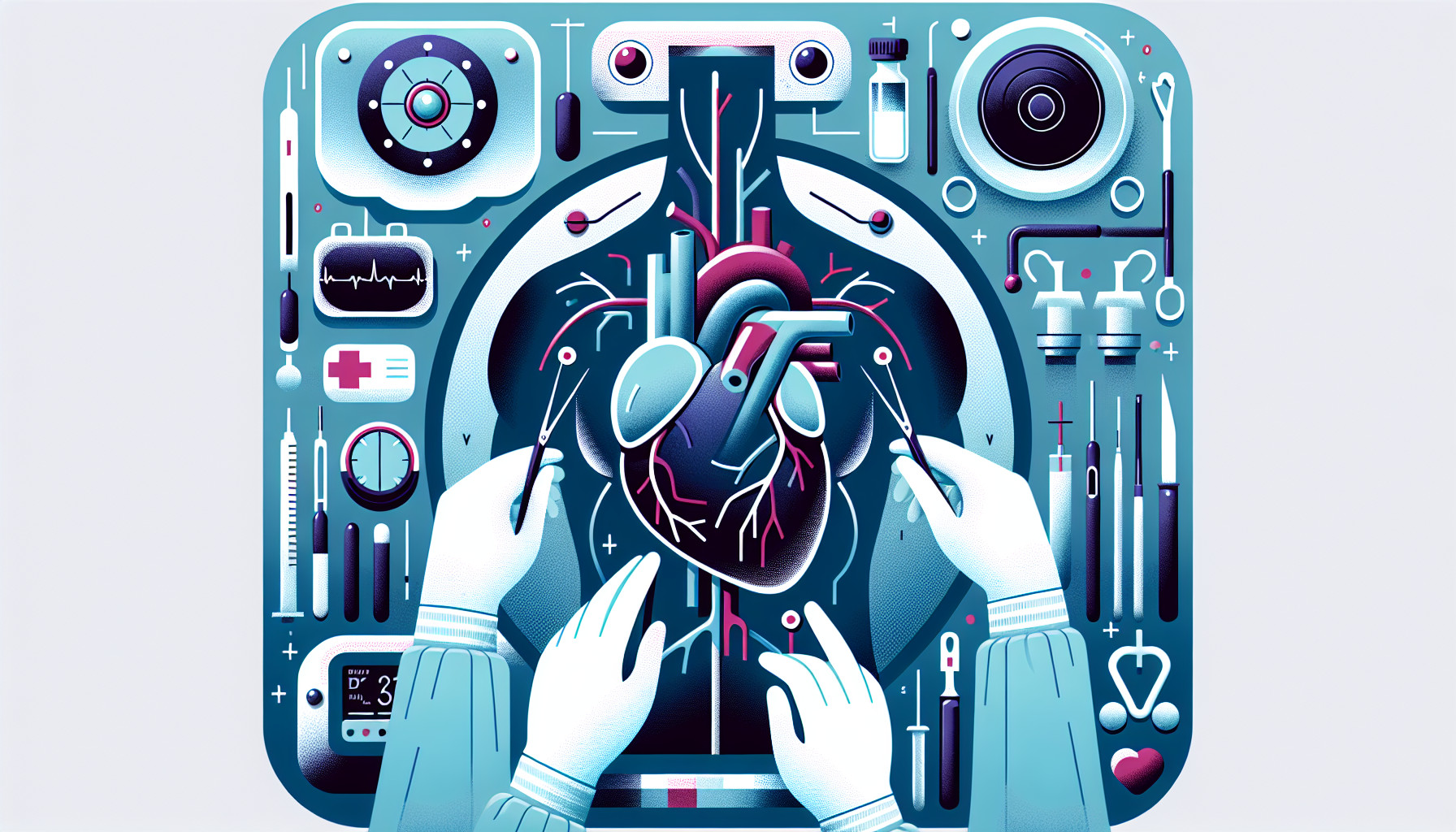Our Summary
This research paper is about comparing two types of heart bypass surgeries: on-pump and off-pump coronary artery bypass grafting (CABG). Previously, most studies have only looked at patient outcomes in the short-term. This study aimed to look at the long-term outcomes, specifically after five years.
They searched multiple databases for past studies on this topic. They focused on five main outcomes: death rates, rates of heart attacks, the occurrence of chest pain (angina), the need for additional heart procedures, and stroke rates.
They analyzed six studies with a total of 8,145 patients. They found that the death rate was slightly lower in the on-pump group (12.3%) compared to the off-pump group (13.9%). However, they didn’t find any significant differences between the two groups in terms of heart attacks, angina, the need for additional procedures, or stroke rates.
In conclusion, the on-pump procedure seems to have a slight advantage in terms of long-term survival. However, the practical significance of this finding is uncertain.
FAQs
- What were the five main outcomes this study focused on in comparing on-pump and off-pump coronary artery bypass grafting (CABG)?
- What was the difference in death rates between the on-pump and off-pump groups in this study?
- Did the study find any significant differences between the on-pump and off-pump groups in terms of heart attacks, angina, the need for additional procedures, or stroke rates?
Doctor’s Tip
One helpful tip a doctor might tell a patient about coronary artery bypass is to discuss with them the potential benefits and risks of both on-pump and off-pump procedures. It is important for the patient to understand that while on-pump may have a slight advantage in long-term survival, there may not be significant differences in other outcomes. Ultimately, the decision should be based on individual factors and preferences. Additionally, it is important for the patient to follow their doctor’s recommendations for post-operative care and lifestyle changes to optimize their recovery and long-term health.
Suitable For
Patients who are typically recommended for coronary artery bypass surgery are those with severe coronary artery disease that is causing symptoms such as chest pain (angina) or shortness of breath, or those who have had a heart attack. Other factors that may lead to a recommendation for bypass surgery include the presence of multiple blockages in the coronary arteries, the location of the blockages, and the overall health and age of the patient.
It is important for patients to discuss the risks and benefits of both on-pump and off-pump bypass surgery with their healthcare provider to determine the best treatment option for their individual situation.
Timeline
Before coronary artery bypass surgery, a patient typically experiences symptoms of coronary artery disease such as chest pain, shortness of breath, fatigue, and other signs of heart disease. They may undergo diagnostic tests such as an electrocardiogram (ECG), stress test, and coronary angiography to confirm the presence of blockages in the arteries.
After the surgery, the patient will spend several days in the hospital recovering. They will be closely monitored for complications such as infection, bleeding, and arrhythmias. They will also undergo rehabilitation to help them regain strength and function.
In the long term, patients will need to make lifestyle changes such as following a heart-healthy diet, exercising regularly, quitting smoking, and managing stress. They will also need to take medications as prescribed by their doctor to prevent further heart problems.
Overall, coronary artery bypass surgery can greatly improve a patient’s quality of life and reduce their risk of future heart events. However, it is important for patients to continue to follow their doctor’s recommendations and attend regular check-ups to monitor their heart health.
What to Ask Your Doctor
Some questions a patient should ask their doctor about coronary artery bypass surgery include:
- What are the potential risks and complications associated with both on-pump and off-pump CABG surgeries?
- How will my recovery differ between on-pump and off-pump CABG surgeries?
- What are the long-term survival rates for each type of surgery?
- Will I need additional heart procedures in the future if I choose one type of surgery over the other?
- How will my quality of life be affected after surgery, particularly in terms of chest pain (angina) and ability to perform daily activities?
- How does the risk of stroke compare between on-pump and off-pump CABG surgeries?
- Are there any specific factors or medical conditions that make one type of surgery more suitable for me than the other?
- What is the success rate of each type of surgery in terms of restoring blood flow to the heart?
- How experienced is the surgical team in performing both on-pump and off-pump CABG surgeries?
- Are there any ongoing clinical trials or research studies comparing the outcomes of on-pump and off-pump CABG surgeries that I should be aware of?
Reference
Authors: Smart NA, Dieberg G, King N. Journal: J Am Coll Cardiol. 2018 Mar 6;71(9):983-991. doi: 10.1016/j.jacc.2017.12.049. PMID: 29495998
